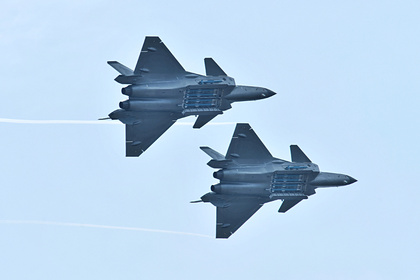Analysts called the shortcomings of the Chinese fifth-generation aircraft with Russian engines, which reduce the efficiency of the J-20. The maneuverability of the aircraft may not be enough to compete with the F-22 and F-35. This is reported by the South China Morning Post.
Earlier, the authors of the Chinese edition of Ordnance Industry Science Technology noted that the inconspicuous J-20 will be able to open the enemy's defenses, paving the way for other aircraft to perform their tasks. The appearance of the J-20 changed the situation when the actions of Chinese aviation were limited by the short range and insufficient versatility of aircraft.
The J-20 debuted in 2011, making China the second country with a fifth-generation fighter of its own design. The aircraft was refined for several years, and in 2017, the J-20 was adopted. Nevertheless, experts believe that the J-20 will not be able to compete with other fifth-generation aircraft, writes the South China Morning Post. Thus, the analyst of the Janes information group Ridzvan Rahmat noted that the main drawback of the J-20 remains its engine. The thrust of the power unit at the level of 125 kilonewtons is not enough to compete with the F-22 and F-35. In addition, due to the weak engine, the aircraft has insufficient maneuverability and is limited in the number of weapons that it can carry, Rakhmat noted. The aircraft is equipped with the Russian AL-31F M2 engine, developed for the Su-27, Su-30 and Su-34 aircraft.
The effectiveness of Chinese aviation also reduces the lack of bombers and transport aircraft. Military expert Zhou Chenmin stressed that China cannot rely only on the J-20. Without transport planes and bombers, the country's air force will not be able to carry out operations far from friendly airports, Chenmin said.
The first J-20 aircraft received the Chinese WS-10B engine, which was installed on fourth-generation aircraft. Subsequently, the aircraft received Russian AL-31F M2. J-20 will fly on Russian power units until the start of production of the modified WS-10C engine. So, back in 2019, the South China Morning Post reported on the superiority of the new engine over its Russian counterpart. Meanwhile, its completion will take more than a year, the publication summarizes.
In May, pictures of the Chinese fourth-generation J-10C aircraft with a new power unit appeared . The aircraft received a Chinese WS-10B engine, which replaced the Russian AL-31F.
Daniil Irinin

